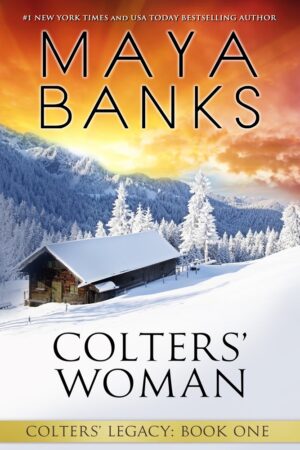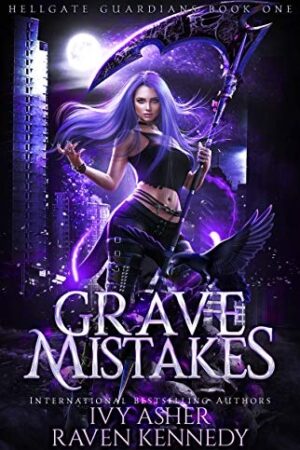Reverse harem is a relatively new romance book trope to reach wide popularity.
The concept is rather simple—instead of just one love interest, there’s multiple. Sometimes those love interests are also interested in each other, therefore overlapping with the polyamorous trope, but usually the love interests are only interested in the female main character. What makes it ‘reverse’ is that historically harems have been one man with several female romantic and/or sexual partners.
The appeal is also rather simple. Instead of one man who is devoted and wholeheartedly in love with the main character, five are, for example. And they’re all hot.
Where does the idea of the harem even come from though? In a roundabout way, Europeans. Or more so, how Europeans perceived Islamic practices in the Middle East during the 19th century. Harems generally existed in wealthy households and consisted of many women and one man.[1] However, European men weren’t allowed to see harems when they visited the Middle East due to religious custom, so their imaginations went wild. The idea was that these “Eastern men” had voracious sexual appetites, so much that one wife simply wasn’t enough, and that they forced women to be a part of these harems.
However, European women were exempt to the rule. They were allowed to join harems and check them out for themselves. Since they were in-the-know, women began to dominate the non-fiction genre of harem literature from the 1850s to the 1950s. But these were European women and at the end of the day harems weren’t seen as sexy but a relationship structure that went completely against Victorian culture.[2] It wasn’t something that was going to evolve into reverse harem romance anytime soon.
Or did it? It’s hard to pinpoint who wrote the first reverse harem romance book but a likely candidate is Eight Cousins by Louisa May Alcott (of Little Women fame) published in 1875. It does have to be noted that Eight Cousins, being a book from 1875, does not feature a modern reverse harem. However it should be noted that there are seven potential love interests, and yes, they’re all first cousins.[3] Eight Cousins shares similarities with the love triangle trope in the way that there can only be one “winner” but just due to the sheer amount of potential suitors in this book, I count it as an early prototype of the reverse harem trope.
It’d take a long time after 1875 for reverse harem to begin to become popular though. And where else would this happen than 1990s Japan? Fushigi Yugi first aired on television in April 1995. Considered a classic anime by fans, the plot centres around a girl in high school who gets magically transported to a fantasy world where she’s a magical priestess. However, she needs bodyguards and she ends up with quite the group of them, all of them hot of course, who are also all romantically interested in her. While this piece of media is 120 years newer than Alcott’s book, the relationship dynamics of Fushigi Yugi still has quite a bit in common with Eight Cousins. Especially with how platonic the relationships are when in comparison to anything by, for example, C.M. Stunich.[4]
The trope would steadily gain popularity in anime over the next fifteen years with animes such as Ouran High School Host Club in 2006 and Vampire Knight in 2008.[5] The 2000s also brought with them the 2006 publication of Maya Banks’ second book, Colters’ Woman.[6]
Menage (three people who are all in a mutual relationship) had already been quite established as a romance trope by 2006. Colters’ Woman is, of course, centred on a non-mutual relationship as the three men are brothers. Pre-2017 reverse harem books like Colters’ Woman were still described as menage though. Some people even cracked out their high school French and called them “Menage à Quatre” books.[7]
With that in mind, reverse harem most likely grew out of the menage trope instead of anything happening in Japanese pop culture.
The earliest mention of the phrase ‘reverse harem’ on Google Books (that isn’t Aquarium Fish Magazine[8]) is a 2007 book titled Understanding Manga and Anime by Robin E. Brenner. Brenner describes reverse harem as the way female creators were breaking into the manga sub-genre of harems. They also describes the reverse harem trope as mostly being spoofs. They weren’t intended to be taken seriously.[9]
In 2015, C.L. Stone released a young adult romance book titled Introductions.[10] It hits some of the common tropes in young adult books at the time, especially the ‘new girl at school’ trope. There’s the reverse harem twist to the trope cocktail though. Mid-2010s young adult books just did not have this trope. It was niche but as a teenage girl of the mid-2010s, I can not express enough how much my anime-loving friends loved Vampire Knight and Ouran High School Host Club. So C.L. Stone writing a reverse harem YA book in 2015 wasn’t a dumb move at all.
It wouldn’t be until 2017 though when reverse harem blew up in popularity. The amount of mentions of ‘reverse harem’ from 2016 to 2017 in Google Books increases dramatically and most of the books you can find on the reverse harem Goodreads shelf are post-2017. This is when reverse harem very quickly became what it is now.
What reverse harem is now is a fantasy of romance and erotica mixed together. The fantasy of being passionately loved by more than one man yet being in a quasi-monogamous relationship. Also the frequent orgies.
5 of my favourite reverse harem books
This post contains Amazon affiliate links. Any purchases made through those links may result in 1 Click Book Deals making a commission.







